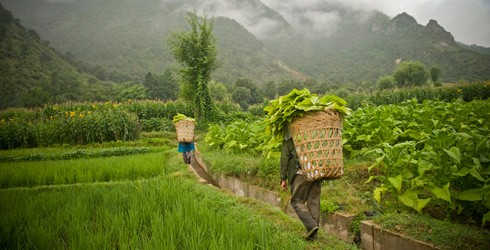Investing in Sustainable Agriculture
Post on: 16 Март, 2015 No Comment

Ryan Vroegindewey/USAID/Mali
Agriculture and other natural resource-based enterprises are the foundation for economic growth in many developing countries. Of the 11 percent of the world’s land surface that is suitable for agriculture, 38 percent has become degraded by poor natural resource management practices. With no significant room to expand areas of cultivation, good farming practices and stewardship of the available land are necessary to increase agricultural productivity, ensure economic growth, protect biodiversity, maintain sufficient amounts of clean water, and meet the increasing food demands of a growing global population.
USAID considers the impact of agricultural production and processing on communities and ecosystems and promotes practices that sustainably intensify farming system productivity, allowing more to be produced on less land, while:
- Improving soil quality. while reducing erosion, salinization, and other forms of degradation to achieve greater resilience to drought, better fertilizer efficiency, and reduced greenhouse gas emissions.
- Minimizing the use of pesticides and herbicides by applying integrated pest management, crop rotation, and crop diversification.
- Employing environmental management systems to ensure proper treatment of solid waste, manure, and waste water.
- Ensuring the safe storage. application, and disposal of agricultural chemicals.
- Maintaining habitats to support wildlife and conserve biodiversity.

Sustainable agriculture integrates environmental health, economic viability, and social equity to ensure long-term productivity of natural resources and improved livelihoods. It helps reduce the risks in developing countries of complex problems like climate change and water scarcity – important because agriculture constitutes approximately 70 percent of water consumption in the developing world, increasingly competing with demand for domestic, industrial, and ecosystem services.
USAID supports sustainable agriculture, which uses ecologically sound, economically viable, and socially responsible techniques, increasingly, focus on environmental sustainability across agricultural supply chains and multi-use landscapes. For example:
- The Sustainable Agriculture and Natural Resource Management Collaborative Research Support Program. which identifies, develops, and extends best practices in sustainable agriculture and natural resources management.
- The Consultative Group on International Agriculture Research. a strategic alliance of members, partners, and international agricultural centers, which researches sustainable intensification techniques that will benefit the poor.
Learn more about USAID’s work on Sustainable Agriculture .














